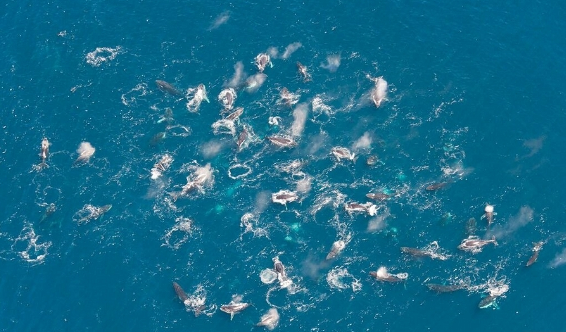Humpback whales might be holding their own version of a march – or something else that requires the presence of so many of them – as scores were seen amassing off southwest South Africa.
This behavior is baffling scientists, who have long thought that the giant mammals were solitary animals. Marine biologists came across the whales gathering in the waters of the Benguela Upwelling System, which are ocean currents flowing from St. Helena Bay to Cape Point, Tech Times reports. The whales appeared to be hunting and feeding in groups of up to 200.
In addition, their presence in the region is off-season. Research cruises have reported sighting humpback whales in October and November, when they should have already migrated to colder waters. At this time of the year, the whales are usually already on their way to Antarctica, where they go to look for food and take their version of a vacation after birthing and nursing their calves in warmer waters.
The sightings of such large groups prompted researchers to look more closely at the feeding habits of humpback whales, which provided new insights into their way of life.
Humpback whales have been considered as loners, described as spending their days alone without the need to seek out companionship. There have been previous studies reporting rare sightings of whales gathering in the Arctic to feed, but never in such large numbers.
Ken Findlay, from the Cape Peninsula University of Technology in South Africa, says this behavior is fairly unprecedented. He explains,
No such dense feeding aggregations have been reported elsewhere in low or mid latitudes during Southern Hemisphere humpback whale migrations.
One theory for this unusual behavior is that there is an abundance of prey in the Benguela waters, which make it appealing to the humpback whales. There are plenty of mantis shrimp in the area, which the whales have been shown to favor.
Another possible explanation is that the whales are exploring new hunting territories to keep their usual food supplies from dying out. It could also be that the whales, whose populations have grown in the past decades, are reverting back to old hunting strategies.
Gísli Vikingsson, from the Marine and Freshwater Research Institute in Iceland, says, “For the last few decades, suddenly they seem to have overcome some threshold and have begun to increase very fast.”
The study was published in PLOS One.
























